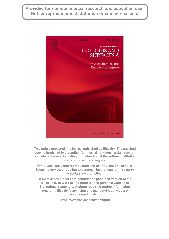摘要
Butyl-alpha,beta-bis(dodecylimidazolium bromide)([C-12-C-4-C(12)im]Br-2) is a new type ionic liquid-based Gemini surfactant. Multiwalled carbon nanotubes (MWCNTs) can be dispersed effectively in [C-n-C-4-C(n)im]Br-2 aqueous solutions due to its special molecular structure, including two imidazole ring head groups and two hydrophobic chains. The resulted MWCNT suspensions are stable for more than one month and no precipitation is observed. Both UV-vis-NIR and transmission electron microscopy (TEM) studies indicate that the MWCNTs dispersed in solutions are present as individual. The dispersed amount of MWCNTs first increased and then decreased with increasing the concentration of [C-12-C-4-C(12)im]Br-2. Compared with single-chain ionic liquid-based surfactant 1-butyl-3-alkylimidazolium bromide ([C(n)mim]Br), [C-n-C-4-C(n)im]Br-2 has stronger ability of dispersing CNTs, which is also ascribed to its molecular structure. It was also found that the [C-n-C-4-C(n)im]Br-2 with a longer hydrocarbon chain demonstrated a stronger dispersion ability. The zeta-potential measurements show that the MWCNTs dispersed in [C-12-C-4-C(12)im]Br-2 aqueous solution have relatively high positive charges, which can conclude that it is the Coulomb force between CNTs that makes them stable. Based on these, the possible dispersion mechanism has been proposed.
- 出版日期2010-4-20
- 单位山东大学
